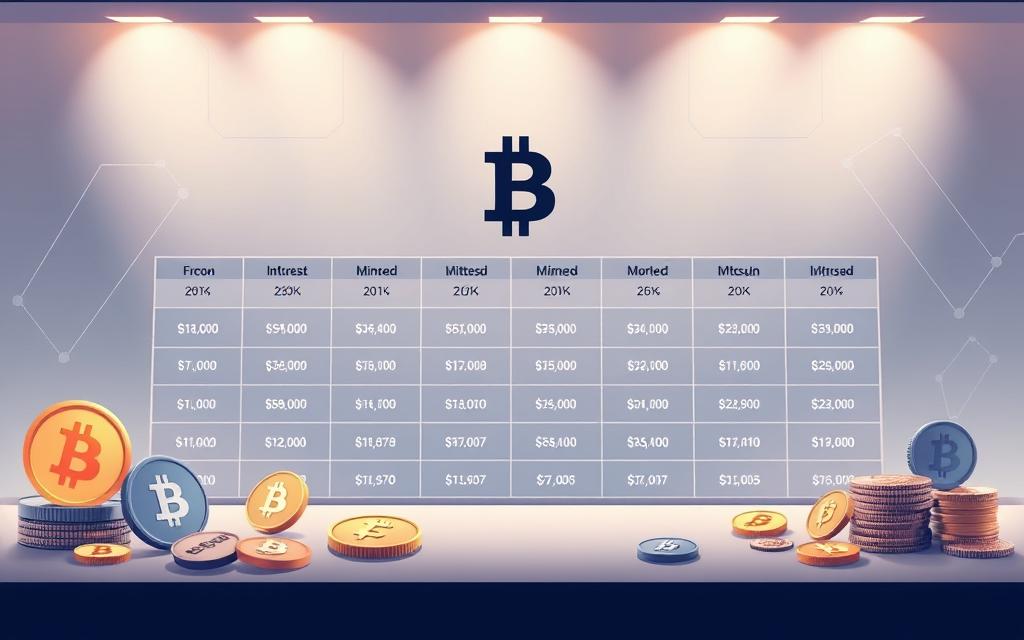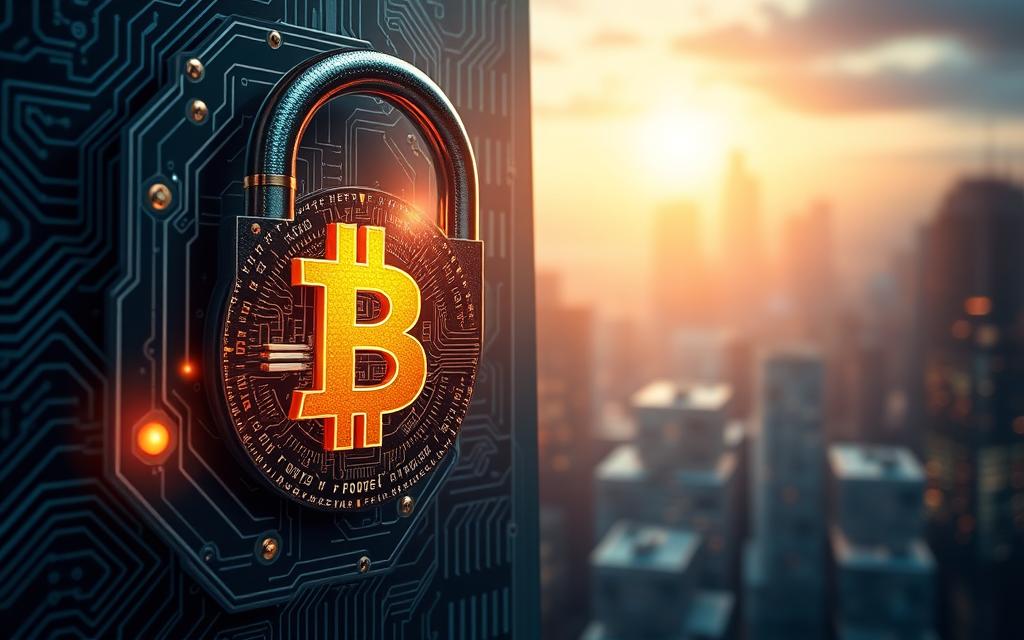Table of Contents
Exchanging digital currencies for traditional money requires careful planning. The right method depends on speed, fees, and security needs. Centralized exchanges, peer-to-peer platforms, and Bitcoin ATMs offer different advantages.
Market trends and wallet compatibility play a crucial role in successful transactions. Some platforms have daily limits, while others prioritize anonymity. Always verify IRS reporting requirements to avoid legal complications.
Mobile apps provide convenience but may charge higher fees. Understanding these options helps maximize value when liquidating holdings. This guide explores the most effective strategies for seamless transitions.
Why Convert Cryptocurrency to Cash?
Shifting crypto assets into cash unlocks real-world purchasing power. Over 60% of investors liquidate portions of their holdings yearly, according to TokenTax. Whether for emergencies or major purchases, fiat conversions bridge digital wealth and everyday needs.
When Cashing Out Makes Sense
Tax-advantaged scenarios often prompt liquidation. Selling during low-income years reduces capital gains liability. Others consider cashing out to cover tuition or medical bills, where immediate liquidity matters.
Emergency funds sometimes outweigh long-term HODL strategies. If crypto represents 30%+ of your net worth, diversifying into cash stabilizes finances. Merchant adoption gaps also force conversions—only 15% of global businesses accept crypto payments.
Common Use Cases for Crypto-to-Cash Conversions
- Real estate: 42% use proceeds for down payments.
- Debt repayment: Top reason (38%) for liquidations.
- Travel: 24% convert holdings for vacation funding.
A 2023 case study showed a trader paying $28,000 in tuition via crypto profits. Timing sales during market peaks maximized their cash payout.
Prerequisites Before Converting Crypto
Preparing for a cryptocurrency liquidation involves more than just clicking ‘sell’—it demands careful setup. Overlooking verification steps or wallet checks can lead to delays or failed transactions. Follow these protocols to ensure seamless conversions.
Verifying Your Accounts
KYC (Know Your Customer) compliance is mandatory on most platforms. Prepare a government-issued ID and proof of address, like a utility bill. Cash App requires SSN verification for transactions exceeding $1,000.
Exchanges often impose 72-hour holds on new linked bank accounts, as seen with Coinbase. Submit documents early to avoid payout delays during volatile markets.
Linking Bank Accounts or Debit Cards
ACH transfers are cost-effective but slower (3–5 days), while wire transfers clear within hours. Confirm your bank account details match exchange records to prevent rejections.
For urgent needs, a debit card enables instant cash access—though fees are typically higher. Always check daily withdrawal limits before initiating large transactions.
Understanding Wallet Compatibility
Not all wallets support every blockchain. ERC-20 tokens demand Ethereum-compatible wallets, whereas BEP-20 requires Binance Smart Chain integration. Multi-signature wallets add security for transfers above $10,000.
Whitelist withdrawal addresses in advance. Exchanges like Kraken block transfers to unverified destinations, adding another layer of fraud protection.
How to Convert Crypto to Cash Using Exchanges
Centralized exchanges dominate the digital asset liquidation landscape with structured processes. These platforms offer liquidity, security, and regulatory compliance, making them a top choice for investors. Below, we outline the steps and compare fees across leading providers.
Step-by-Step Guide for Centralized Exchanges
1. Account Verification: Complete KYC checks with a government ID and proof of address. Exchanges like Coinbase may delay withdrawals for unverified users.
2. Deposit Crypto: Transfer assets from your wallet to the exchange. Ensure compatibility—ERC-20 tokens require Ethereum-supported wallets.
3. Execute Trade: Choose between market orders (instant) or limit orders (price-specific). *Liquidity risks* arise with large market orders in volatile conditions.
4. Withdraw Cash: Link a bank account or debit card. ACH transfers take 3–5 days; wires are faster but costlier.
Comparing Fees: Coinbase vs. Kraken vs. Binance
Fee structures differ dramatically:
- Binance: 0.1% spot trading fee + 1.8% cash-out fee. Tiered discounts apply for high-volume traders.
- Coinbase Advanced Trade: 0.4% maker-taker fee. FDIC insurance covers up to $250,000 per user.
- Kraken: 0.16%–0.26% fees, with lower rates for stablecoins like USD Coin (USDC).
Geofencing restricts U.S. users from certain features on top exchanges like Binance. Always confirm regional availability before trading.
Converting Crypto via Peer-to-Peer (P2P) Platforms
Peer-to-peer platforms offer direct transactions without intermediaries. These marketplaces connect buyers and sellers globally, enabling personalized deals. Unlike centralized exchanges, P2P trades often feature negotiable rates and payment methods.

Pros and Cons of P2P Transactions
Flexibility stands out as the top advantage. Sellers set prices and accept PayPal, Venmo, or even cash. LocalBitcoins reports escrow release times of 2–24 hours, balancing speed and security.
Drawbacks include higher fraud risks. Paxful’s 1.2% chargeback rate highlights the need for caution. Dispute resolution can take days, especially with cross-border deals.
Safety Tips for P2P Sales
Follow these protocols to protect your funds:
- Verify escrow services: Ensure the platform holds funds until delivery confirmation.
- Check reputation scores: Deal only with users having 95%+ positive feedback.
- Use multi-signature wallets: Require 2/3 approvals for large transactions.
For face-to-face meetups, choose public spaces like bank lobbies. Share meeting details with a trusted contact.
| Feature | LocalBitcoins | Paxful |
|---|---|---|
| Escrow Time | 2–24 hours | 1–12 hours |
| Chargeback Rate | 0.8% | 1.2% |
| Payment Methods | 350+ | 400+ |
Never share private keys or wallet access during negotiations. Legitimate buyers won’t ask for sensitive data.
Using Bitcoin ATMs for Instant Cash
Bitcoin ATMs provide a fast, physical way to access funds from digital assets. Over 33,865 machines operate across the U.S., according to Coin ATM Radar. Transactions complete in minutes, ideal for urgent needs.
Locating a Reliable Bitcoin ATM
Use apps like Coin ATM Radar to find nearby machines. Filter by operator fees or two-way functionality (buy/sell). Avoid standalone ATMs in low-traffic areas—higher fraud risks.
Check for QR code scanning compatibility. Modern ATMs support wallet apps, reducing manual address errors. Always verify the machine’s bill denominations—some dispense only $20s or $100s.
ATM Fees and Limits
Average fees hover at 8.4% above spot prices, but can spike to 15%. Two-way ATMs often charge more due to operational costs. Below, compare top operators:
| Operator | Fee Range | Daily Limit |
|---|---|---|
| CoinFlip | 6.9%–8.9% | $10,000 |
| Bitcoin Depot | 7.5%–12% | $7,500 |
AML compliance triggers ID checks for transactions exceeding $900. Operators allocate 70% of funds to cold wallets for security. Hot wallets handle smaller, instant withdrawals.
Selling Crypto with Mobile Apps (Cash App, BitPay)
Mobile apps simplify crypto liquidation with intuitive interfaces and quick payouts. Platforms like Cash App and BitPay bridge digital assets and bank accounts in minutes. Users benefit from biometric logins and real-time market rates.
Cash App: Step-by-Step Conversion Process
Begin by verifying your identity to unlock the $25,000 daily limit. Submit a government ID and enable biometric authentication for security. Deposits clear within 1–3 business days.
To sell bitcoin, navigate to the Investing tab and select “Sell.” Cash App applies a 1.76% spread but guarantees price locks for 30 seconds. Instant withdrawals cost 1.5% extra—standard transfers are free.
BitPay Wallet: Selling and Withdrawal Options
BitPay supports 15+ cryptocurrencies, including ETH and DOGE. Withdrawals to bank accounts or debit cards process in 1–2 days. Cross-border transactions incur a 2% surcharge.
- Fee comparison: BitPay’s 1.5% spread beats Cash App’s 1.76%.
- Chargeback protection: Both apps escrow funds until confirmations.
- Instant withdrawals: Ideal for urgent needs but costlier.
Always double-check wallet addresses before confirming transactions. Misplaced funds are rarely recoverable.
Alternative: Convert Crypto to Gift Cards
Gift cards present a flexible alternative for accessing crypto value without traditional banking. Platforms like BitPay partner with 1,000+ retailers, from Amazon to Home Depot, enabling instant conversions. Select branded cards even feature 0% fees, maximizing your spending power.
When Gift Cards Outperform Cash Conversions
Merchant category restrictions may limit usability—some cards exclude services like travel or firearms. Resale markets exist but typically offer only 70–85% of face value. Always verify expiration dates to avoid losing funds.
Bulk purchases often unlock discounts, ideal for businesses or large budgets. Tax-wise, the IRS treats these as barter transactions, requiring fair market value reporting. BitPay’s tax tools simplify compliance.
For urgent needs or niche spending, gift cards bridge the gap where crypto cash isn’t accepted. They’re especially useful for gifting or locking in values during market volatility.
Comparing Fees Across Conversion Methods
Transaction costs vary dramatically across crypto liquidation methods, impacting final payout amounts. A 2023 CoinATMRadar study revealed Bitcoin ATMs charge median fees of 15.3%, while Gemini ActiveTrader users pay just 0.25% for trades. Understanding these differences helps preserve capital during conversions.

Exchange Fees vs. ATM Fees vs. App Fees
Centralized exchanges typically offer the lowest transaction fees, especially for high-volume traders. The table below compares popular options:
| Platform | Fee Range | Best For |
|---|---|---|
| Gemini ActiveTrader | 0.25%–0.35% | Large trades (>$10k) |
| Bitcoin ATM | 8%–15.3% | Urgent cash needs |
| Cash App | 1.5%–1.76% | Small, quick sales |
Mobile apps balance convenience and cost, while ATMs prioritize speed at premium rates. Time-of-day liquidity affects spreads—trading during peak hours often yields better prices.
How to Minimize Transaction Costs
Strategic planning reduces fee burdens significantly:
- Batch transactions: Combine smaller trades to qualify for volume discounts
- Track network congestion: Ethereum gas fees drop 40% during off-peak times
- Leverage tax deductions: IRS allows writing off exchange fees as investment expenses
VIP programs at major platforms waive fees for users maintaining $50k+ balances. Always compare real payout amounts—not just advertised rates—before committing.
Transaction Speed: Which Method Is Fastest?
Time matters when liquidating digital assets—some methods deliver funds in minutes, others take days. Banking protocols and exchange verification tiers create significant timing differences. Same-day access often requires premium accounts or specific withdrawal types.
Fedwire transfers beat standard ACH by processing before 6:30 PM ET cutoff times. European SEPA transfers add 1-2 business days due to cross-border verification. Weekend requests queue until next banking day.
Instant Withdrawals vs. Bank Delays
Real-time gross settlement systems enable immediate cashouts for verified users. Exchanges like Kraken process USD withdrawals in under 10 minutes for WireX members. Most platforms impose holds on new accounts for fraud prevention.
- Cutoff times matter: Missed Fedwire deadlines delay funds by 24+ hours
- ACH prenotes: New bank links require 3-day verification before first transfer
- Weekend exceptions: Crypto.com processes withdrawals 24/7 but banks don’t credit until Monday
High-value thresholds trigger extra checks—Coinbase verifies $100k+ withdrawals manually. Debit card cashouts bypass these checks but cap at $10,000 daily.
Security Best Practices
Crypto security breaches cost investors $3.8 billion in 2022 alone. Robust protection protocols separate successful transactions from devastating losses. Exchange APIs remain prime targets, accounting for 78% of theft attempts according to Chainalysis data.

Enabling Two-Factor Authentication (2FA)
Google Authenticator provides offline code generation, while Authy offers cloud backups. Both outperform SMS verification, which suffers from SIM-swap vulnerabilities. Hardware keys like YubiKey add physical confirmation for high-value transactions.
Implement these advanced 2FA measures:
- Biometric pairing: Link authentication apps to fingerprint or facial recognition
- Backup code storage: Keep printed copies in secure locations
- Session limits: Set 2FA reauthorization every 30 days
Avoiding Phishing Scams
Fraudsters increasingly mimic exchange login pages. Always verify URL authenticity before entering credentials. Address poisoning attacks manipulate clipboard data—double-check wallet addresses for every bitcoin transaction.
“Security isn’t expensive, it’s priceless. The 15 minutes spent enabling 2FA could prevent years of financial recovery.”
Essential defense tactics include:
- Whitelisting: Pre-approve withdrawal addresses in exchange settings
- Email filters: Flag messages containing “urgent” or “verification” keywords
- Cold storage: Keep 80%+ assets in offline wallets
Regularly review connected apps and revoke unused API keys. Most platforms show active sessions—terminate unrecognized logins immediately. Combining these measures creates multiple security layers that deter most attacks.
Tax Implications of Cashing Out Crypto
The IRS classifies cryptocurrency sales as taxable events, requiring detailed documentation. Over 61% of sellers misreport cost basis, according to TokenTax. Accurate reporting prevents audits and maximizes after-tax profits.
Reporting Crypto Sales to the IRS
Form 8949 must accompany your tax return for each transaction. List sale dates, proceeds, and cost basis. Partnerships like TokenTax automate this process, reducing errors.
State laws add complexity—California imposes a 13.3% capital gains rate. Non-resident aliens face 30% withholding on U.S.-based sales. Always verify local requirements.
How to Calculate Capital Gains
Subtract your purchase price (cost basis) from the sale amount. The IRS permits FIFO (first-in-first-out) or LIFO (last-in-first-out) lot identification methods.
Unlike stocks, crypto isn’t subject to wash sale rules. Losses can offset gains immediately. Below, compare reporting methods:
| Method | Advantage | Best For |
|---|---|---|
| FIFO | Simplest for IRS audits | Long-term holders |
| LIFO | Reduces taxable income | High-volume traders |
- De minimis exception: Sales under $200 may avoid reporting (varies by state).
- Staking rewards: Taxable as income at receipt value.
- Gifts: Recipient inherits original cost basis.
“Accurate records turn tax season from a headache into a strategic advantage.”
Timing Your Conversion: Market Considerations
Strategic liquidation timing can significantly impact final payout amounts. Volatility patterns and macroeconomic shifts create windows of opportunity. Savvy investors analyze indicators beyond spot prices to optimize exits.

Tracking Bitcoin Price Trends
The 14-day RSI indicator signals overbought (70+) or oversold (30-) conditions. Historically, RSI dips below 30 precede 15% rebounds—ideal for delaying sales. CME gap analysis identifies price voids between futures closes and opens, often filling within 14 days.
Key metrics to monitor:
- Futures basis trades: Negative funding rates suggest short-term bearish sentiment.
- Stablecoin supply ratios: Declining USDT reserves indicate reduced buying pressure.
- Miner revenue trends: Hash price drops below $0.08/TH often precede capitulation.
When to Avoid Selling
Exchange net flows turning positive signal accumulation phases. Macroeconomic events like Fed rate decisions trigger 8%+ swings—wait 48 hours post-announcement. The table below outlines high-risk periods:
| Scenario | Impact | Alternative Action |
|---|---|---|
| RSI > 75 | 23% pullback risk | Partial profit-taking |
| CME gap > 5% | 90% fill probability | Delay 1–2 weeks |
“Markets cycle, but data doesn’t lie. The best exits align with on-chain metrics, not emotions.”
Black Thursday events (March 2020, June 2022) show panic selling locks in losses. Exchange reserves dropping below yearly averages suggest long-term holder confidence—a bullish counterindicator.
Long-Term Strategies vs. Short-Term Cash Needs
Investors face a critical choice between immediate liquidity and long-term gains when managing digital assets. Market cycles and personal financial goals shape this decision, requiring tailored approaches for each scenario.
DCA vs. Lump Sum: ROI Breakdown
Dollar-cost averaging (DCA) reduces volatility risks but may lag behind lump-sum returns during bull markets. A 2023 CoinMetrics study showed lump-sum conversions outperformed DCA by 17% over 4-year periods.
Consider these factors:
- Opportunity costs: Early sales forfeit compound growth potential.
- Tax brackets: Spreading sales across years keeps capital gains rates lower.
- Market timing: Historical data favors holding through Bitcoin halving cycles.
| Strategy | 5-Year ROI | Best For |
|---|---|---|
| Lump Sum | 210% | Bear market entries |
| DCA (Monthly) | 183% | Risk-averse investors |
Alternative Liquidity Solutions
Collateralized lending platforms like BlockFi offer instant cash without selling assets. Borrowing against holdings at 4.5–8% APR preserves upside exposure. Token vesting schedules can also align with planned expenses.
For generational wealth, consider:
- Inflation-adjusted targets: Adjust sale thresholds annually for purchasing power.
- Trust structures: Minimize estate taxes when transferring crypto assets.
- Staking yields: Reinvest earnings to offset liquidation needs.
“The best portfolios balance today’s needs with tomorrow’s aspirations—liquidate strategically, not reactively.”
Conclusion
Liquidating digital assets efficiently balances speed, cost, and security. Centralized exchanges suit large trades, while P2P platforms offer flexibility. Bitcoin ATMs deliver instant cash but charge premium fees.
Before finalizing any transaction, enable 2FA and whitelist withdrawal addresses. Store tax documents securely—tools like TokenTax automate IRS reporting.
Monitor markets with Glassnode or CoinMetrics. For complex scenarios, consult a crypto-savvy CPA. Strategic planning ensures smooth conversions aligned with financial goals.
FAQ
What are the best platforms to sell Bitcoin Cash for cash?
Popular options include Coinbase, Kraken, and Binance. These exchanges offer competitive fees, fast transactions, and secure withdrawals to your bank account or debit card.
How long does it take to withdraw cash from crypto exchanges?
Most withdrawals take 1-3 business days via bank transfer. Some services like Cash App or BitPay offer instant transfers for a higher fee.
Are there tax implications when converting crypto to cash?
Yes, selling crypto assets is a taxable event. You must report capital gains or losses to the IRS based on the price difference between purchase and sale.
Can I use a Bitcoin ATM to get cash instantly?
Yes, Bitcoin ATMs provide immediate cash, but fees range from 5-15%. Locate one using Coin ATM Radar and verify limits before transacting.
Is it safe to sell crypto through P2P platforms?
P2P trades can be secure if you use escrow services and verify buyer/seller reputations. Avoid direct transfers without protection.
What’s the cheapest way to convert crypto to cash?
Exchanges like Kraken or Binance typically have lower fees (0.1%-0.5%) compared to ATMs or mobile apps. Link your bank account to avoid extra charges.
Can I convert crypto to a gift card instead of cash?
Yes, platforms like BitPay or Purse.io let you exchange Bitcoin Cash for gift cards at retailers like Amazon, avoiding banking delays.
How do I avoid scams when cashing out crypto?
Enable two-factor authentication (2FA), double-check wallet addresses, and never share private keys. Stick to verified platforms like Coinbase or Cash App.
What’s the fastest method to get cash from crypto?
Debit card withdrawals or Bitcoin ATMs offer near-instant access, while bank transfers may take days. Speed often comes with higher transaction fees.
Should I time my crypto sale based on market trends?
Monitor price movements using tools like TradingView. Avoid panic selling during dips unless urgent cash is needed.









